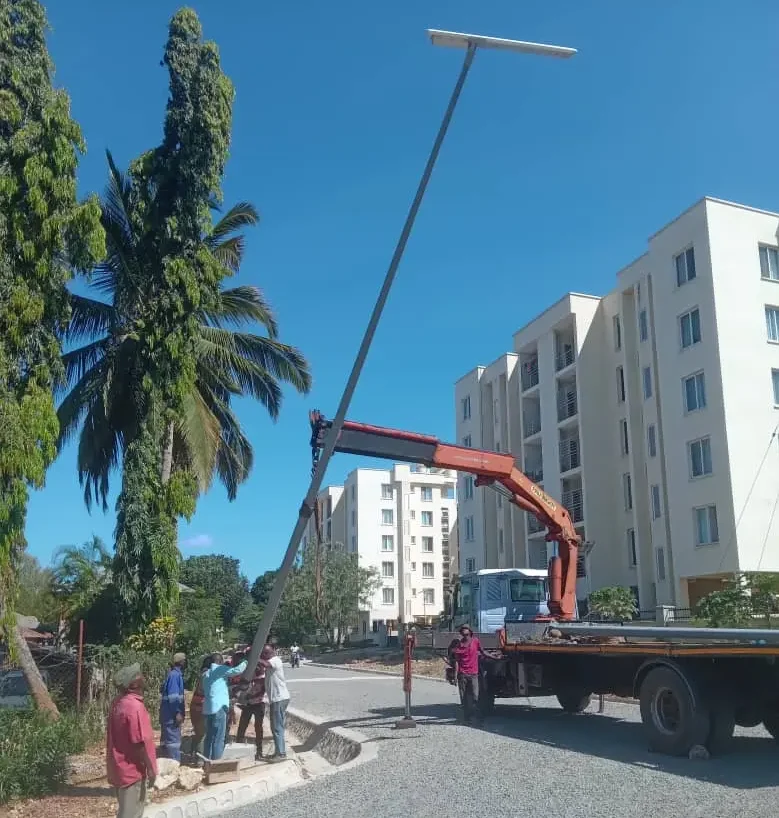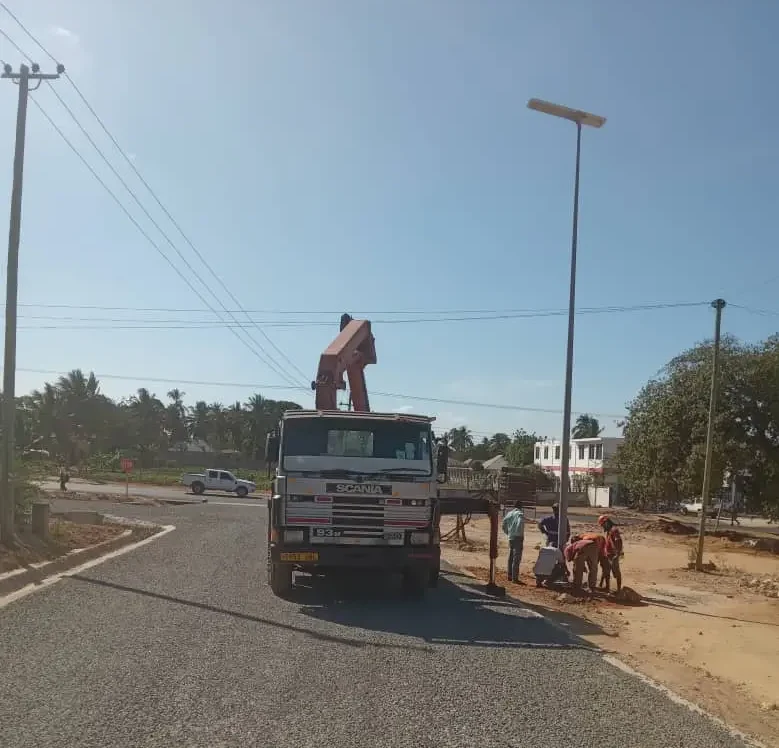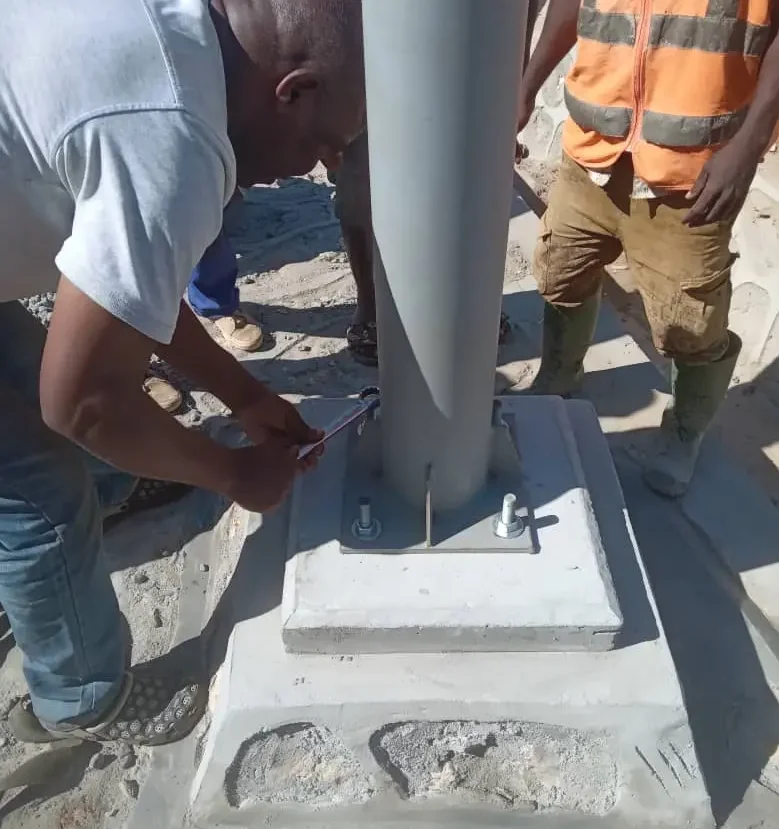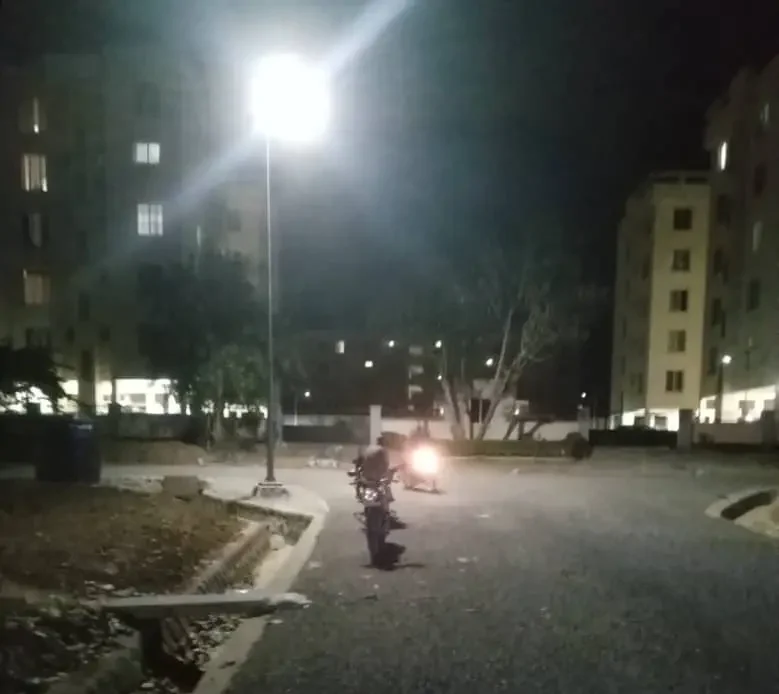As global attention on renewable energy and green infrastructure continues to rise, African countries are taking significant strides toward energy transition. Tanzania, a key economy in East Africa, is actively promoting the modernization of urban and rural infrastructure—especially the green upgrade of road lighting systems.

1. Project Background and Needs Analysis
1.1 Project Background
A major road in Tanzania serves as a critical transport artery connecting urban and rural areas, carrying heavy pedestrian and freight traffic. However, it has long suffered from insufficient nighttime lighting. According to the local transportation department, nighttime traffic accidents occur at a rate three times higher than daytime incidents, posing serious risks to public safety. Furthermore, poor lighting has hindered the growth of roadside commercial activity, limiting the road’s potential for developing a nighttime economy. The local government urgently needed an economical, efficient, and eco-friendly lighting solution to improve road safety, boost economic vitality, and enhance community security.
1.2 Needs Analysis
During the preliminary research phase, the project team identified the following core needs:
-
Enhance road safety: Low nighttime visibility contributes to frequent accidents, requiring a high-brightness, stable lighting system.
-
Promote nighttime economy: A well-lit environment supports extended business hours and increased consumer activity.
-
Improve community security: Adequate lighting helps reduce crime and enhances residents’ sense of safety.
-
Ensure sustainability: With abundant solar resources, solar streetlights are an ideal green energy choice for Tanzania.
-
Facilitate easy installation and maintenance: Given limited infrastructure, the solution must be easy to deploy and maintain.
These requirements shaped the technical direction of the project, and the Sresky Atlas solar streetlight emerged as the ideal solution.

2. Technical Solution Design
2.1 Core Advantages of Sresky Atlas Solar Streetlights
The Sresky Atlas series is specifically designed for high-traffic roads and public spaces, with key features tailored to meet Tanzania’s needs:
-
10,000 LM ultra-bright output: Provides high-intensity illumination for full road coverage and enhanced nighttime visibility.
-
High-efficiency monocrystalline solar panels: Offer excellent charging performance and rapid energy conversion.
-
Advanced lithium-ion batteries: Long cycle life (2,000+ cycles) ensures reliable, consistent performance.
-
ALS 2.4 technology: Intelligently adjusts discharge power to ensure lighting for over 10 days during continuous rain or overcast conditions.
-
TCS temperature control system: Enhances battery performance in extreme temperatures, ideal for Tanzania’s diverse climate.
-
High-efficiency OSRAM 3030 LEDs: Achieve luminous efficacy of up to 230 lm/W, maximizing energy efficiency.
-
Intelligent control modes: Supports M1, M2, and M3 settings with PIR sensors for adaptive, on-demand lighting.
-
Durable construction: IP65/IK08 protection ensures stable operation in harsh environments.
-
Modular design: Enables quick maintenance by allowing direct component replacement on the pole.
-
Optimized installation parameters: Recommended height of 10 meters and 32-meter spacing ensure uniform lighting.
2.2 Technical Highlights Analysis
-
ALS 2.4 Technology: Extends lighting time in low-sunlight conditions through intelligent power management.
-
TCS System: Extends battery lifespan by stabilizing performance under temperature extremes.
-
PIR Sensor: 120° wide-angle with 8-meter detection range; adjusts brightness based on movement to conserve energy.
3. Project Implementation and Deployment
3.1 Construction Process
A standardized process was followed to ensure efficient installation and commissioning:
-
Foundation preparation: Excavate and secure the foundation cage using C20 concrete.
-
Fixture assembly: Attach the bracket to the fixture using supplied screws.
-
Fixture-pole connection: Mount the fixture onto the pole securely.
-
Pole hoisting and fixing: Use lifting equipment to align and fix the pole to the foundation.
-
System commissioning: Test lighting modes, sensors, and system functions after installation.
3.2 Local Participation
The project emphasized local engagement by training community workers in installation and maintenance. This approach enhanced efficiency and ensured long-term sustainability.

4. Project Outcomes and Impact
4.1 Direct Outcomes
-
Comprehensive road coverage: Atlas streetlights deliver uniform lighting across the full road length.
-
Reliable nighttime illumination: ALS 2.4 and TCS systems ensure continuous lighting in all weather.
-
Green energy solution: 100% solar-powered, with zero emissions and no dependency on grid electricity.
4.2 Social and Economic Impacts
-
Improved road safety: Traffic accidents decreased by 30%, significantly enhancing pedestrian and vehicle safety.
-
Enhanced community security: Crime rates dropped, and residents reported improved safety and peace of mind.
-
Boosted local economy: Nighttime commercial activity increased, with local shop sales rising by 20%.
-
Enriched community life: More nighttime social and recreational opportunities emerged.
-
Scalable model: Demonstrated successful technology deployment for other regions in Africa.
-
Reduced long-term costs: No electrical wiring needed, minimizing utility and maintenance expenses.

5. Summary
The solar streetlight project in Tanzania, implemented with the Sresky Atlas series, effectively addressed the challenge of nighttime lighting while delivering tangible improvements in safety, economic activity, and sustainability. This project serves as a successful model for renewable energy infrastructure development across Africa and beyond, underscoring Sresky’s technical leadership and commitment to social responsibility in the solar lighting sector.
Table of Contents